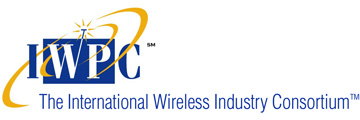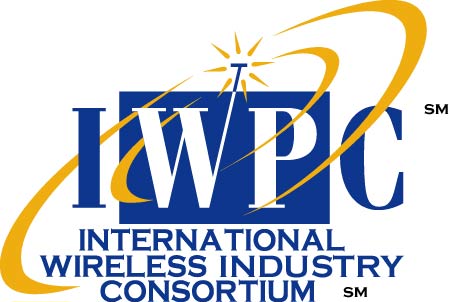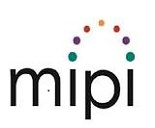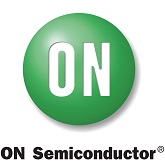Next Generation ADAS, Autonomous Vehicles and Sensor Fusion
Mapping the road to full autonomy - Which sensors are key to safer driving? Architectures, system bus and interference challenges for Camera, Radar, Lidar, V2V and V2X connectivity.
Hosted by:
When
December 4-6, 2019
Introduction
Advanced Driver Assistance Systems or vehicle-based intelligent safety systems are currently in a phase of transition from Level 2 Active Safety systems, where the human driver monitors the driving environment towards level 3, 4 and higher, where the automated driving system monitors the driving environment. Many technical questions remain to be answered or until now, are perhaps unknown. Considering perception optimisation for camera, radar, lidar as well as connectivity to and from data centers for scenario and behaviour detection. This workshop will consider how the industry transitions from trials and test beds to embedded solutions and volume deployment.
Workshop Goals
- What are the next steps within the evolution of driver assistance towards autonomous driving?
- What are the challenges moving from level 3 to level 4 and beyond?
- What part will machine learning, artificial intelligence and big data play?
- How can simulation and validation systems help drive advanced safety systems into production?
Agenda
|
DAY 1 Wednesday 7:00 PM |
Evening Reception & Registration |
At Hotel |
|
DAY 2 Thursday 8:00 AM |
Breakfast |
|
|
9:00 AM |
Welcome and Introductions
Host Introduction and Keynote
|
Keynote
VP, Autonomous Driving
|
|
11:00 AM |
Platform Perspectives
|
Driving into the Future with Automotive Technology
Director, Automotive Solutions & Platforms
Advancing In-Vehicle Connectivity
Senior Director, Technology at Qualcomm and MIPI Alliance Board
|
|
12:00 Noon |
Networking Lunch |
|
|
1:00 PM |
Platform Perspectives, continued |
Next-Generation ADAS and Autonomous Driving Software Platforms
Automotive Business Development
|
|
1:30 PM |
System and Technology Perspectives
|
Sensor Suite for Autonomous L3 to L5 Driving
Director, Systems and Applications
Advanced Algorithms for Radar Signal Processing
Systems Architect, Automated Driving Sensors
Trading Compute for Resolution - Virtual Aperture Radar Signal Processing
CEO
|
|
3:00 PM |
Networking Break |
|
|
3:30 PM |
Technology Enablers
|
Scaling Up Simulation for Higher Levels of Autonomy
Global Director, Automotive
Building Blocks of Sensor Fusion Test
Autonomous Vehicle BDM
Challenges for Sensor Fusion Test
Director, Business Development, ADAS
|
|
5:30 PM |
Adjourn |
|
|
7:00 PM |
Networking Dinner at Il Fornaio
|
|
|
DAY 3 December 6 Friday 7:00 AM |
Breakfast |
|
|
8:00 AM |
Technology Enablers, continued
|
Self-Driving Cars and Lidar
Head of Lidar Systems
Chip-Integrated Frequency Modulated Continuous Wave (FMCW) LiDAR Advances Safety for ADAS an Autonomous Vehicles
VP, Business Development and Marketing
Safe, Cost-Effective and Efficient Perception Systems for Autonomous Vehicles
SVP of Engineering
|
|
10:00 AM |
Networking Break |
|
|
10:30 AM |
Technology Enablers, continued
|
Digital Code Modulation (DCM) Radar: Boosting Sensor Suite Performance for Mobility
Senior Director, Systems Engineering
Assessing "Sensors - Late Fusion and Early Fusion"
Senior Director, Product Management
140 GHz CMOS Front-Ends for Next Generation Automotive Imaging Radar
Program Manager, Radar Systems
|
|
12:00 Noon |
Networking Lunch |
|
|
1:00 PM |
Technology Enablers, continued
|
Compressive Sensing Enabling Fusion at the Edge
Senior Program Manager
Tight Coupling Between Radar and INS for Accurate and Reliable ADAS Positioning
Managing Director R&D Canada
Hi-Resolution Automotive Radar through use of Luneburg Lens Antenna
President & CTO
How will V2X Compliment Onboard Sensors?
CEO
High-end Navigation & Mapping Solutions
CEO
|
|
3:00 PM |
Closing Discussion, Host Review and Actions |
Key Take-Aways
|
|
3:45 PM |
Adjourn |
FAQs
- What is the deadline for presentation/handout materials?
- Who are the attendees?
- What are the costs/registrations fees?
- Hotel information?
- What are the travel options from the airport to the hotel?
- Are there any audiovisual requirements?
- Will business cards be collected?
- What is the dress code?
- How will handout materials be provided?
- What is the deadline for
presentation/handout materials?
Deadline for electronic version of presentation/handout materials: Friday, November 29, 2019
- Who are the attendees?
- We do not permit the Press.
- We do not permit Analysts.
- We do not permit Consultants.
- We do not permit 3rd party sales reps.
- We only permit "first hand knowledge experts" in business and technology issues, prepared to contribute to the discussion.
- What are the costs/registrations fees?
ALL Hosts, Speakers, Panel Members and Attendees will be asked to cover out-of-pocket workshop costs such as conference room costs, food (Social Reception plus First Day breakfast/lunch/dinner plus Second Day breakfast/lunch plus Breaks), audio/visual costs, etc.
These costs will be $1199 (USD) per person. (For IWPC Members only.)
ALL Hosts, Speakers, Panel Members and Attendees will be asked to pay this fee in advance with either Visa, MasterCard, American Express, cash, personal check or business check. Make checks payable to IWPC.
- Hotel information?
Hilton San Jose
300 Almaden Boulvard
San Jose, CA 95110
Phone: +1 (408) 287-2100
Hotel WebsiteThe IWPC room block rate is $269/night. The deadline for hotel reservations is Tuesday, November 12, 2019. After that date, rooms cannot be guaranteed at the IWPC rate. You can make your reservations at Book your group rate for IWPC SanJose 2019.
- What are the travel options from the airport to the hotel?
https://www3.hilton.com/en/hotels/california/hilton-san-jose-SJCSHHF/maps-directions/index.html
- Are there any audiovisual requirements?
A Computer Projector will be available for the speakers.
In addition, we audiotape all presentations and the interactive discussions. Post workshop, presentations are made available to IWPC Members on the IWPC WEB site, along with “recordings” of all presentations and panel sessions.
- Will business cards be collected?
Business cards will be collected at the door from all attendees. We will make copies of these cards, which will be available to all who provided a business card.
- What is the dress code?
Business casual suggested. No ties, please!
- How will handout materials be provided?
For ALL IWPC members:
All IWPC members are invited to submit materials to be included in the online workshop folder in the IWPC Research Library. This should NOT BE SALES MATERIALS. Rather, we suggest it contain technical information about your technology as it relates to the workshop topics.
For all companies who will be making a presentation at the Workshop:
You are invited to submit an advance copy of your presentation, complete with graphics and illustrations.
These materials will be included on the IWPC website Research Library.
Please submit these materials either by email, as a Word for Windows fbout your technology as it relates to the workshop topics.
For all companies who will be making a presentation at the Workshop:
You are invited to submit an advance copy of your presentation, complete with graphics and illustrations.
These materials will be included on the IWPC website Research Library.
Please submit these materials either by email, as a Word for Windows file, Power Point files or PDF files.
- Go to www.iwpc.org
- Click on IWPC Activities Tab
- Under Workshop: 4G/5G Multi-Band, Multi-Mode User Equipment
- Click on Submit Presentation Proposal. Complete the form and attach your presentation.
- Once we receive your presentation we will send an email confirmation.
AS BACKUP, PLEASE BRING AN ELECTRONIC COPY USB STICK WITH YOU!














